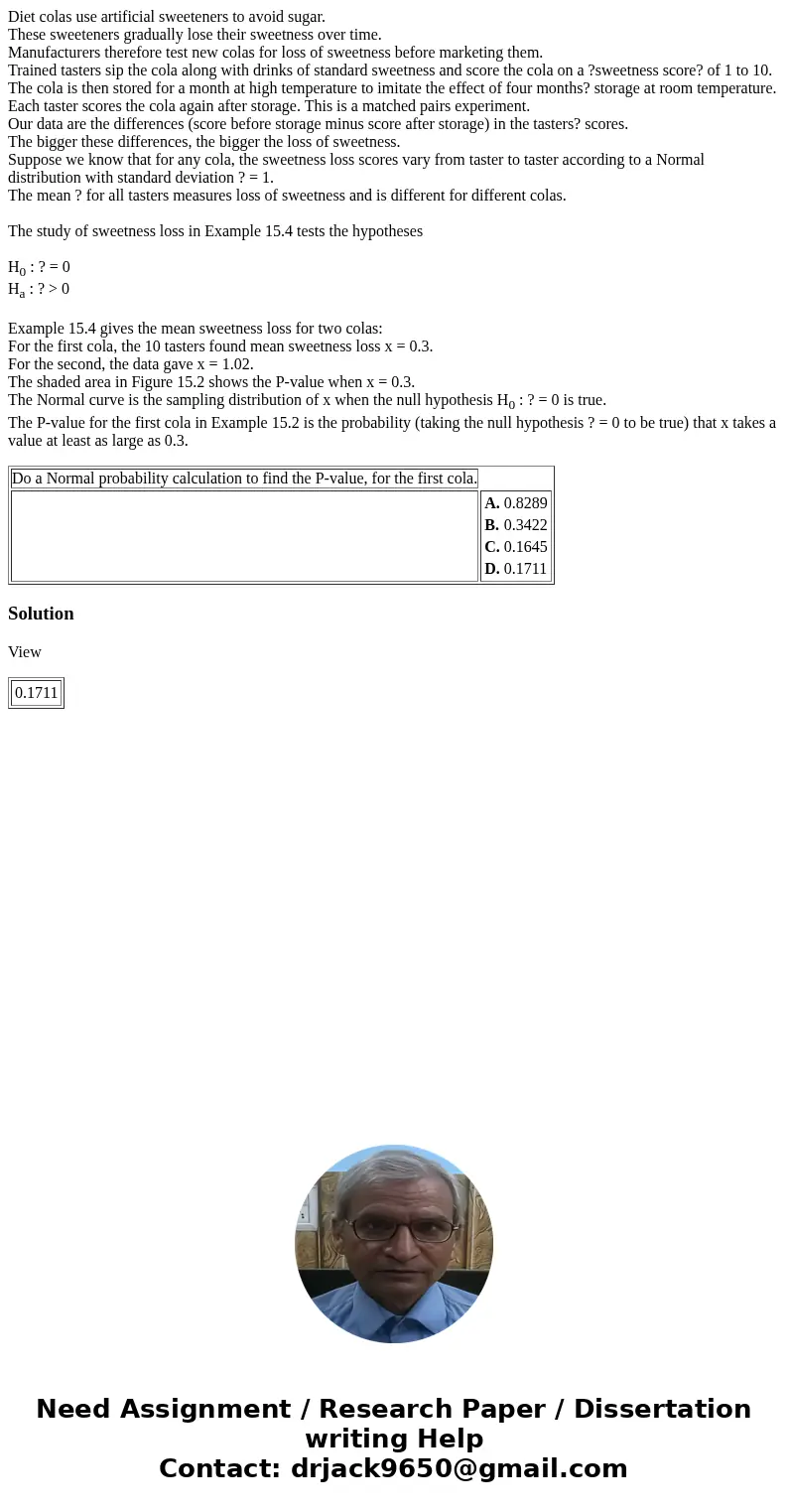Diet colas use artificial sweeteners to avoid sugar.
These sweeteners gradually lose their sweetness over time.
Manufacturers therefore test new colas for loss of sweetness before marketing them.
Trained tasters sip the cola along with drinks of standard sweetness and score the cola on a ?sweetness score? of 1 to 10.
The cola is then stored for a month at high temperature to imitate the effect of four months? storage at room temperature.
Each taster scores the cola again after storage. This is a matched pairs experiment.
Our data are the differences (score before storage minus score after storage) in the tasters? scores.
The bigger these differences, the bigger the loss of sweetness.
Suppose we know that for any cola, the sweetness loss scores vary from taster to taster according to a Normal distribution with standard deviation ? = 1.
The mean ? for all tasters measures loss of sweetness and is different for different colas.
The study of sweetness loss in Example 15.4 tests the hypotheses
H0 : ? = 0
Ha : ? > 0
Example 15.4 gives the mean sweetness loss for two colas:
For the first cola, the 10 tasters found mean sweetness loss x = 0.3.
For the second, the data gave x = 1.02.
The shaded area in Figure 15.2 shows the P-value when x = 0.3.
The Normal curve is the sampling distribution of x when the null hypothesis H0 : ? = 0 is true.
The P-value for the first cola in Example 15.2 is the probability (taking the null hypothesis ? = 0 to be true) that x takes a value at least as large as 0.3.
| Do a Normal probability calculation to find the P-value, for the first cola. |
| | A. | 0.8289 | | B. | 0.3422 | | C. | 0.1645 | | D. | 0.1711 | |
View

 Homework Sourse
Homework Sourse